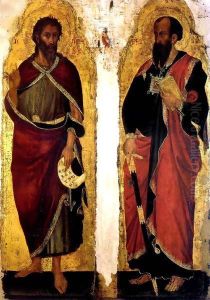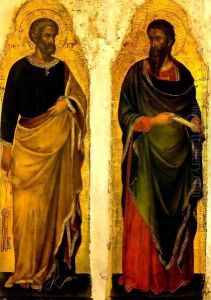Jacobello di Bonomo Paintings
Jacobello di Bonomo, an Italian painter, remains a somewhat elusive figure in the history of art, primarily active during the late Gothic period. The exact date of his birth is unknown, but he was active in the 14th and early 15th centuries, with his death recorded in 1443. Jacobello's work is significant for its role in the transition from medieval to Renaissance art in Italy, particularly in the Veneto region where he was most active. Despite the scarcity of biographical details, his contributions to the art world are recognized through the stylistic elements and themes present in his surviving works.
Jacobello's artistic output is characterized by a blend of Byzantine influences and the emerging stylistic traits of the early Renaissance. This fusion is visible in his use of color, attention to detail, and the emotional expressions of his figures. His works often depicted religious themes, a common focus for artists of his time, yet they exhibit a growing interest in the human form and the exploration of spatial depth, aspects that herald the approaching Renaissance. Among his known works, the altarpiece 'Justice and the Archangel Michael,' currently housed in the Gallerie dell'Accademia in Venice, stands out for its intricate detail and vibrant color palette.
The lack of comprehensive records has made it challenging for art historians to fully map Jacobello di Bonomo's career and influence. However, his surviving pieces suggest he was a bridge between the medieval and Renaissance periods, contributing to the gradual shift in artistic paradigms. His work not only reflects the stylistic trends of his time but also provides insight into the socio-religious context of early 15th-century Italy. Despite the gaps in his biographical timeline, Jacobello di Bonomo's legacy in the art historical canon is secured by his role in paving the way for the blossoming of Renaissance art in the Veneto and beyond.

